Available at: https://ssrn.com/abstract=4939397 or http://dx.doi.org/10.2139/ssrn.4939397
Abstract:
From 2020 to 2023, the federal government implemented a series of large-scale, high-profile interventions to address the financial uncertainty and economic emergency caused by the COVID-19 pandemic, and to provide long-term fixes to several existing programs aimed at helping ease the burden of student loans on borrowers and families. These interventions included several rounds of funding passed by Congress to provide direct funding to institutions of higher education and students, a pause on federal student loan payments, and reforms to address long-standing problems in existing debt relief programs including the Public Service Loan Forgiveness (PSLF) program.
Given the nationwide scale and simultaneous nature of many of these efforts, research on the impacts of any single policy or program remains limited. This analysis seeks to better understand the effects of these policies on borrowers, families, and students in California. Leveraging proprietary credit panel data, qualitative interviews with borrowers, and publicly available data from the U.S. Department of Education, we focus on the effects of three major interventions: the student loan payment pause, a one-time PSLF “waiver” to increase access to debt relief for public service workers, and funding to institutions from the Higher Education Emergency Relief Fund (HEERF). Our findings include:
- The student loan repayment pause narrowed the gap in homeownership between relatively advantaged and disadvantaged households in California and reduced the likelihood of delinquency on any type of loan more for borrowers subject to the payment pause.
- According to qualitative interviews of borrowers in California, the payment pause allowed student loan borrowers greater opportunity to consider family planning, save money, reduce other debts, relieve mental distress, while also enabling some participants to afford meaningful life experiences and make needed investments, such as house repairs.
- Improvements to the PSLF program that led to loan cancellation allowed borrowers the financial room to make large purchases and catch up on savings, as well as provide immediate economic support to family members.
In California, public higher education institutions dedicated HEERF funds disproportionately to defraying the cost of tuition for students, which may have contributed to the state largely maintaining enrollment rates as institutions in other states suffered considerable declines.
Commentary:
While this work is focused on the impact of student loan relief in California during the pandemic, it is still useful for showing the benefits for borrowers of student loan relief elsewhere, with hopefully further research being forthcoming.
And while it may seem obvious to many that those individual benefits to borrowers described in this paper add up together to societal benefits, these findings would likely have broader political appeal if those connections were made more explicit, viz. How does student loan relief improve society as a whole, not just individuals? This could also investigate issues of more conservative appeal such as if and how student loan relief increased entrepreneurship and the formation of small businesses, whether it encouraged marriage (and reduced divorce), allowed contributions to charities, etc.
With proper attribution, please share this post.
To read a copy of the transcript, please see:


Blog comments